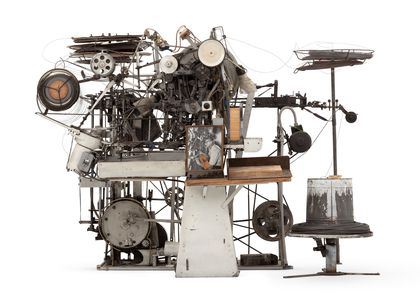
Monthly sky maps from the 2021 Australasian Sky Guide published by MAAS Media.
What’s in the sky this June?
Constellations
Constellations represent groups of stars that have been given a name and more recently a border. For millennia they have been used as a tool to share significant cultural stories, events and as markers. Today, the 88 western constellations used here help astronomers map the sky and search for astronomical objects. This June these constellations dominate the winter sky:
- Canis Major – low in the west southwestlies the constellation of Canis Major, the greater dog with the brightest star in the night sky, Sirius. A hot white star at just 8.6 light years makes it the 7th closest. Like many constellations, a good imagination, and the ability to ‘see’ stick figure characters will help see the side profile of Orion’s hunting
- Leo – the lion, in the northwest, looks more like an upside-down question mark in the southern hemispherefor us than a lion as seen from the north. Its brightest star Regulus (Little King) is a system of four tightly bound stars at 79 light years. It was once referred to as one of the four Royal Stars, or guardians of the heavens because of its proximity to the point in the sky that marked the northern Summer Solstice as seen by Persian astronomers ~5,000 years ago. Precession of the equinoxes has now moved this point to Cancer the crab.
- Virgo – the maiden, high overheadis the second largest constellation in the sky and one of the two in which the ecliptic and celestial equator cross. This one marks the current position of the September equinox. It is home to a cluster of galaxies of which M87 is the largest at around 60 million light years with a central black hole at least 7 billion times the mass of the Sun. It has one bright star, the 16th brightest in the night sky, Spica which is about 250 light years away. Like most stars, it is a binary. The brighter being about 7 times the diameter of the Sun and 10 times more massive. Its hot surface temperature of around 20,000 kelvin makes it blue-white in colour.
- Scorpius –rising in the eastern sky, Scorpius is one of the brightest and most easily identifiable constellations. Easily identified by its hooked tail and the red supergiant star Antares, Scorpius is the constellation that looks most like its namesake. In Greek Mythology, the scorpion plays a role in many myths, however it is best known for its pursuit of Orion through the night sky.
- Sagittarius – also known as the archer, can be found 15 degrees to the right of Scorpius’s stingerand low in the southeastern sky. In Greek Mythology, the archer is a centaur, pointing his arrow towards the heart of Scorpius. The heart of the Milky Way galaxy appears in this constellation at a distance of about 26,000 light years with is 4 million solar mass black hole called Sagittarius A Star.
- Crux – Crux or the Southern Cross, the smallest constellation and its pointers of Alpha and Beta Centauri arehigh in the south in the early evening. To find south, draw an imaginary line from the top of Crux though the bottom and across the sky. Midway between the Pointers draw a line perpendicular to the line that joins them. Where these two lines intersect is close to the southern celestial pole. From this point drop to the horizon for south.
- Centaurus – surrounding the Southern Cross on three sides is Centaurus, the Centaur, said to represent the scholarly Chiron, tutor of many of the Greek gods and heroes. The pointer stars (alpha and beta) make up the front legs of the centaur, with the brightest of the two, the brightest star in the constellationand the Sun’s closest neighbour and a complex system of three stars.
- Carina – in the southwesternsky and represents the keel of a ship. Carina was originally part of the constellation Argo Navis (Argo was the ship of Jason and the Argonauts) and the nearby constellations of Vela (the sails) and Puppis (the stern) formed the rest of the ship. In 1756, Nicolas Louis de Lacaille published his catalogue of the southern stars showing Argo Navis divided into the three constellations we see today. Canopus, the second brightest star in the sky, can be found in Carina and is a white supergiant star about 313 light years away.
Planets
- Venus is low in the northwest after sunset. It starts the month in Taurus but two days later moves into Gemini. At the end of the month is joins Mars in Cancer. On 12 June a young crescent Moon is below and to the right of Venus.
- Mars is also in the northwest after sunset moving from Gemini into Cancer. It is more than 40 times fainter than it was in late 2020 due to its increased distance of around 350million km. On 13 June, the three day old Moon is below Mars while on 14 June it will be above.
- Mercury is visible low in the east ahead of sunrise later in the month. It will be in Taurus but will be hard to see.
- Jupiter spends the month in Aquarius and will be near the Moon on 2 June and 29 June. It is best seen in the hours before sunrise. A small telescope should be able to resolve it 4 large Moons and two equatorial belts.
- Saturn rises well before midnight but is currently best seen in the early morning hours of 1-4am. It lies in the constellation of Capricornus and on 28 June the waning Moon will be between it and Jupiter.
Moon
For the monthly movements of the Moon, check out our Moon Phase Calendar.
Deep Sky
Explore the universe through binoculars or a telescope and take in these gems of the June sky:
- Jewel Box Open Cluster NGC4755 – is about 7600 light-years away, within Crux or the Southern Cross constellation, the open star cluster of about 100 stars contains blue and red young super giants.
- Sombrero Galaxy – Also known as M104 from the Messier Catalogue. This galaxy is 28 million light-years away and is situated within the constellation Virgo.
- Alpha Centauri star system – A star system consisting of three stars, Alpha Centauri A and Alpha Centauri B and the closest star to our Sun, Proxima Centauri at 4.2 light-years away. Proxima Centauri is a red dwarf star and is only visible through large telescopes. It is believed to be orbiting the two larger stars.
- Omega Centauri Globular Cluster NGC5139 – One of about 150 globular clusters within the Milky Way. The largest cluster within the galaxy, Omega Centauri is 16,000 light-years away within the Centaurus constellation. It may be the core of an old galaxy with over 10 million stars.
- The Milky Way – as seen from dark rural locations on a Moonless night is perfect at this time of year around midnight with the centre in Sagittarius high overhead. The faint glow of billions of stars extends from the low southwest across the sky to the northeast. No telescope required and look for the head and neck of the emu in the sky.
- The Great Nebula in Carina NGC3372 – sinking into the southwest, is more than four times larger than the more famous Orion nebula (M42) seen in summer. Its distance of around 7,500 light years disguises its immense size of around 500 light years in diameter. On a Moonless night it is a stunning view through binoculars or a telescope as well as being visible to the naked eye. It contains some of the youngest star clusters in the Milky Way as well as a star already coming to an explosive death. The star Eta Carinae at 100-150 times the mass of the Sun is a dying cataclysmic variable which is expected to explode as a supernova anytime within the next million years. A supernova precursor eruption in the 1840s temporarily elevated it to the second brightest star in the night sky.
Learn More
- Purchase the 2021 Australasian Sky Guide by Dr Nick Lomb, featuring an annual report of what’s in the sky and the latest astronomical findings. Produced by MAAS Media.
- View the June Sky Chart, which shows the stars, constellations and planets visible in the night sky from anywhere in Australia
- Check out these resources for getting started.


